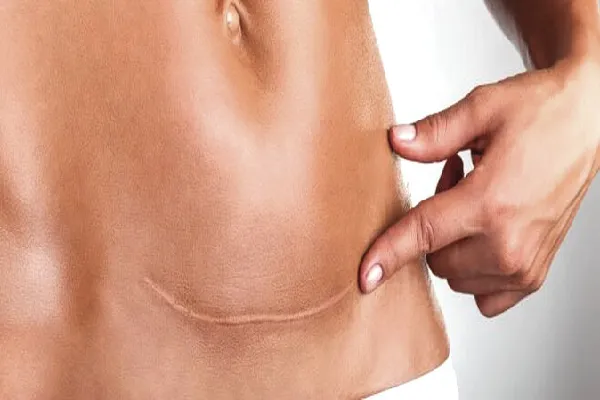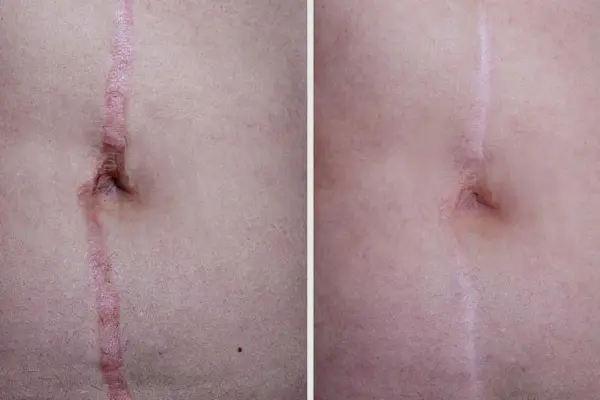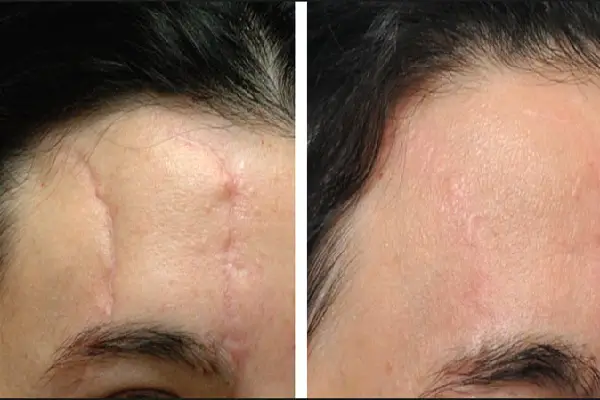Is plastic surgery for scars effective?
Scar refers to a fibrous tissue formed by the body to replace the damaged skin in order to protect the healed wound site. In fact, scars represent memories of past injuries.
Some people do not care about scars although others tend to remove them. Scar revision surgery aims at healing or minimizing scar appearance, which can help to increase an individual’s self-confidence.
Along with the aesthetic aspect, scar revision surgery can improve performance in the cases in which scar tissue leads to limited movement.
Appropriate method selection
Choosing the best therapeutic method for your scar depends on various factors such as the type, location, and size of scar, as well as your medical history. When you consulate your plastic surgeon, you can discuss the different therapeutic options, as well as which one is best for you.
The surgeon may recommend minimally-invasive procedures for mild to moderate scars. These methods are as follows.
- Corticosteroid injection: This injection can assist in reducing inflammation and flattening hypertrophic and keloid scars.
- Bleomycin injection: This medicine is effective in treating hypertrophic scars although it may cause hyperpigmentation in individuals with darker skin.
- Laser therapy: Lasers can be used to remove the surface layers of the skin and make scar smoother.
- Re-exfoliation: Microdermabrasion and dermabrasion can be useful for removing acne scars.
- Microneedling: Microneedling can help improve scar appearance, in which small needles are utilized to pierce the skin and stimulate collagenization.
- Cryosurgery: Cryosurgery can be effective for some types of scars, during which scar is frozen with liquid nitrogen.

Scar revision surgery
As for deep or large scars, scar revision surgery may be recommended by the surgeon. In this method, the surgeon uses different techniques to close the wound in a way that minimizes the scar appearance. These techniques are provided as follows.
- Skin grafting: Skin grafting involves replacing scarred skin with a piece of skin removed from another part of the body.
- Skin flapping: In this method, the scar is covered by the skin and underlying tissue detached from the adjacent area.
- Multi-layer wound closure: As for this approach, the surgeon stitches the tissue in layers to increase the strength of wound.
- W-plasty: This procedure includes reorienting the scar by creating zigzag incisions to attract less attention.
- Z-plasty: Regarding Z-plasty technique, the Z-shaped incisions are made to relocate the scar in order to enhance its appearance.
| Method | Explanations |
| Skin grafting | A piece of skin is taken from a part of the body to replace the scarred skin. |
| Skin flapping | The skin and underlying tissue of the area adjacent to the scar are applied to cover the scar. |
| Multi-layer wound closure | The surgeon stitches the tissue in layers for improving the strength of wound. |
| W-plasty | The surgeon cuts zigzag incisions to change the direction of scar so that it attracts less attention. |
| Z-plasty | The surgeon relocates the scar by creating the Z-shaped incisions to improve its appearance. |
Types of the scars can be treated through using plastic surgery
Dicolored or uneven scars
These scars, which often remain after surgery, can be partially or completely removed through laser therapy, dermabrasion, and microdermabrasion.
Hypertrophic scars
These scars are more prominent and thick than normal scars and may be red, pink, or dark. Corticosteroid injection, laser therapy, and surgery are among the common treatments for this type of scar.
Keloid scars
Keloid scars are large and prominent and often extend beyond the border of original wound. The initial treatment for this type of scars includes corticosteroid injection and scar removal (excision) although radiotherapy may also be performed in case of recurrence.
Contractions
Contractions are non-elastic tissues which replace damaged elastic tissues and can limit the movement of organs and joints. Plastic surgery is carried out to release contractions and restore the range of motion.
Related content: How to shrink your stomach?

Plastic surgery for acne scar
Chronic acne can leave scars, known as acne scars. These scars can affect the self-confidence of individuals and appearance of their skin. Fortunately, acne scars can be treated through different approaches such as plastic surgery.
Types of acne scars
- Atrophic acne scar: This type of scar depresses in the skin and have a pit-like appearance.
- Hypertrophic acne scar: Hypertrophic acne scar raises above the surface of the skin and creates an uneven appearance.
Non-surgical treatments
- Laser therapy: Lasers can stimulate collagen and heal the appearance of scar.
- Microneedling: Microneedling involves producing tiny holes in the skin to stimulate collagenization.
- Chemical exfoliation: In this method, the top layer of the skin is removed, and subsequently the scar is smoothed.
Plastic surgery
Plastic surgery can be a suitable method in cases where non-surgical treatments are not effective. The type of surgery depends on the type of scars.
Atrophic acne scar:
- Scar lift surgery: In this approach, the surgeon lifts the scar from the underlying tissue and makes it flush with the surface of the skin.
Hypertrophic acne scar:
- Corticosteroid injection: Corticosteroid injection can help reduce and flatten the scar.
- Scar removal surgery: Scar removal surgery is utilized to remove the scar completely.
- Cryosurgery: Cryosurgery includes using liquid nitrogen to freeze and eliminate the scar.
Surgical sites
Acne scars in various parts of the body can be subjected to plastic surgery although the face, neck, trunk, and limbs are among the most common surgical sites.
Steps of surgery
Before the operation, the surgeon will determine the type of scar, as well as the best therapeutic method for you. There are different ways to revise scars, which include the following steps.
Anesthesia
The type of anesthesia is dependent on the location and extent of the scar, as well as your preference.
- Local anesthesia: In this procedure, only the scar region becomes numb and you will be awake during the operation.
- Sedation: Sedation involves injecting a medicine to cause you to feel sleepy and relaxed.
- General anesthesia: Regarding general anesthesia, you will be completely anesthetized and will not feel anything during the operation.
Recovery
The duration of post-surgical recovery depends on the extent and type of surgery. In general, the following issues can be expected.
- Swelling and bruising around the scar site are prevalent in the first 1-2 weeks after surgery.
- The surgeon teaches you how to care for the wound. For example, he/she may say how to wash and dress the wound, and recommend to apply cold compresses for reducing swelling and avoid vigorous activity.
- The surgeon will follow up with you for next examinations to check your healing process.
- Use a broad-spectrum sunscreen of SPF 30 or higher to protect your scar from the sun radiation.
- It may take months to shape the final appearance of your scar.
Summary
The plastic surgery for scars can lead to a significant improvement in the scar appearance and increase your self-confidence although it is important to have realistic expectations. Scars do not disappear completely, while they can be changed in a way that attracts less attention.
It is very important to select a plastic surgeon who is eligible and experienced in scar surgery. He/she should discuss the various treatment options with you and help you choose the best method for your needs.
After plastic surgery for scars, you should carefully follow the surgeon’s post-operative care instructions like applying a dressing, avoiding vigorous activity, and taking painkillers.

